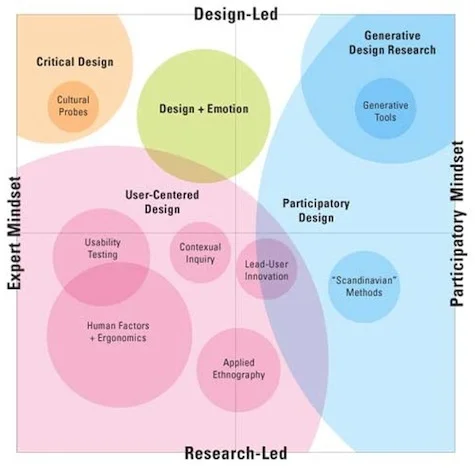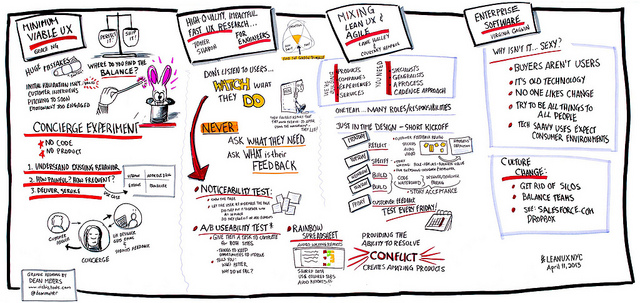The evolution of design methodologies has shifted from focusing solely on individual user needs to embracing collaborative ecosystems where users actively co-create value.
This journey—spanning User Centred Design (UCD), User Experience (UX), and User Co-creation (UC)—reflects a broader transformation in innovation paradigms.
At the heart of this shift lies the concept of Living Labs, open innovation ecosystems that empower users as co-producers.
In this post, we explore this progression, anchored in academic frameworks and real-world applications, to understand how cocreation reshapes the future of design.
1. The Foundations: User Centred Design (UCD)
User Centred Design (UCD) emerged in the 1980s as a response to the limitations of technology-driven development. Rooted in human-computer interaction (HCI) and ergonomics, UCD prioritizes understanding user needs through iterative testing and feedback. Key principles include:
- Usability Testing: Evaluating how easily users interact with a product.
- Contextual Inquiry: Observing users in their natural environments to uncover unmet needs.
- Participatory Design: Involving users in brainstorming sessions or workshops.
The ISO 9241-210 standard formalized UCD as a process to “design systems to be usable by focusing on users, their tasks, and environments” (ISO, 2010). However, UCD often treats users as passive subjects rather than active contributors.
The Role of Human Factors and Ergonomics
UCD overlaps with Human Factors and Ergonomics, which optimize systems for safety and efficiency. For example, automotive interfaces are designed to minimize driver distraction through ergonomic layouts (NHTSA).
2. Expanding Horizons: User Experience (UX)
User Experience (UX) broadened UCD’s scope by emphasizing emotional and psychological engagement. Don Norman, who coined the term, argued that design should evoke positive emotions while meeting functional needs (Emotional Design, 2004). UX encompasses:
- Aesthetics: Visual appeal and brand alignment.
- Accessibility: Ensuring inclusivity for diverse users (e.g., WCAG guidelines).
- Journey Mapping: Visualizing user interactions across touchpoints.
UX’s limitation, however, is its focus on individual users. As Living Labs researcher Marc Pallot noted, UX often neglects the socio-emotional dynamics of group interactions—a gap addressed by User Group Experience (UGX).
3. The Rise of User Co-creation: Bridging UX and UC
3.1 What is User Co-creation (UC)?
User Co-creation positions users as active partners in innovation. Pioneered by Prahalad and Ramaswamy (Harvard Business Review, 2000), UC leverages collective intelligence through platforms like:
- LEGO Ideas: Fans submit and vote on new product designs.
- Starbucks’ My Starbucks Idea: Customers propose menu items or store features.
User Co-creation thrives in Living Labs, defined as “user-centric ecosystems where technology is tested and refined in real-life contexts with end-users as co-producers” (Ballon et al., 2005).
3.2 The Living Lab Framework
Living Labs integrate stakeholders—users, developers, policymakers—into open innovation networks. Examples include:
- Smart Cities: Barcelona’s CityOS platform engages citizens in urban planning.
- eHealth: The European Health and Digital Executive Agency tests telehealth solutions with patients.
These labs emphasize socio-emotional intelligence (Goleman, 2006) to foster trust and collaboration among diverse groups.
4. Mapping the Research Landscape
The transition from UCD to User Co-creation is visualized in design research frameworks.
4.1 Sanders & Stappers’ Design Research Map
Liz Sanders’ framework (2008) categorizes design research along two axes:
- Approach: Research-led (academic) vs. Design-led (practical).
- Mindset: Expert-led (users as subjects) vs. Participatory (users as co-creators).
Areas like Generative Design (tools for idea generation) and Critical Design (provoking societal reflection) highlight the shift toward participatory methods.
4.2 Living Lab Research Map
Building on Sanders’ work, Pallot et al. introduced a Living Lab map with dimensions:
- Interaction Mode: From HCI (individual) to Interpersonal (group).
- Research Type: Observation (passive) vs. Participative (active).
Key areas include:
- Web 2.0 User Content Creation (UCC): Platforms like Wikipedia and GitHub.
- Empathic Design (ED): Tools like cultural probes to elicit emotional insights.
5. Tools and Methods Enabling Cocreation
5.1 Generative Tools
- Cultural Probes: Kits with cameras or diaries to capture user emotions (Gaver et al., 1999).
- Co-Design Workshops: LEGO Serious Play uses bricks to prototype ideas.
5.2 Digital Platforms
- Miro: Collaborative whiteboarding for remote teams.
- Figma: Real-time prototyping with stakeholder feedback.
5.3 Metrics for Success
- Adoptability: How quickly innovations spread virally.
- Social Capital: Trust and reciprocity within user communities (Nahapiet & Ghoshal, 1998).
6. Challenges and Future Directions
6.1 Barriers to Cocreation
- Organizational Resistance: Silos hinder open innovation.
- Ethical Concerns: Data privacy in participatory platforms (GDPR compliance).
6.2 Emerging Trends
- AI-Driven Cocreation: Tools like OpenAI’s GPT-4 assist in brainstorming.
- Decentralized Innovation: Blockchain DAOs (e.g., MakerDAO) enable community governance.
7. Conclusion: Designing for Collective Futures
The shift from User Centred Design (UCD) to User Co-creation (UC) marks a democratization of innovation. By embracing Living Labs and participatory frameworks, designers can harness the collective genius of users. As Don Norman aptly stated:
“The real power of design lies not in solving problems, but in enabling people to solve their own.”
For further reading, explore:


